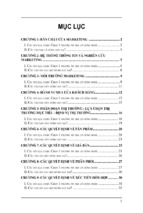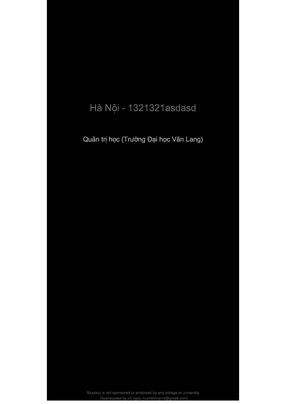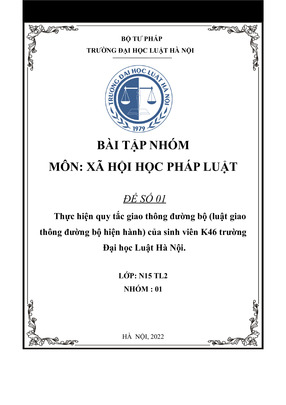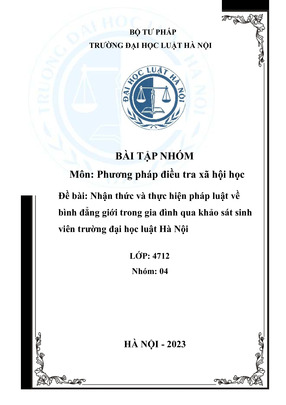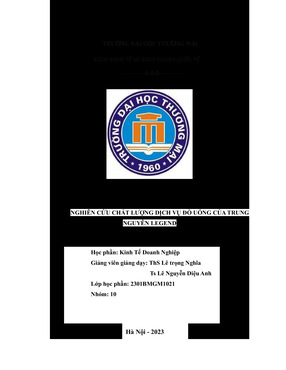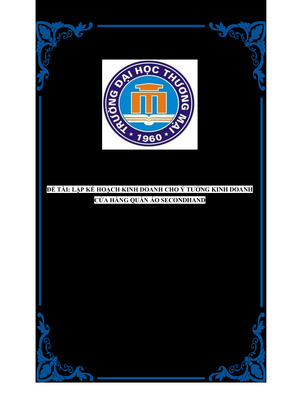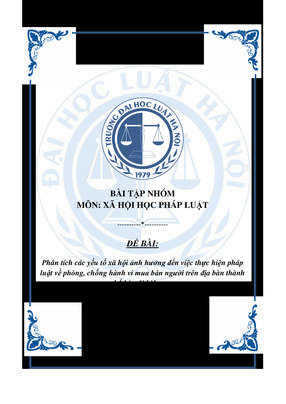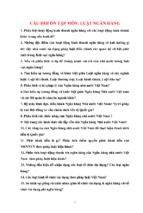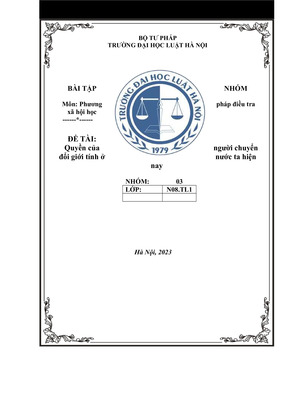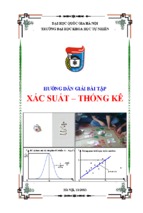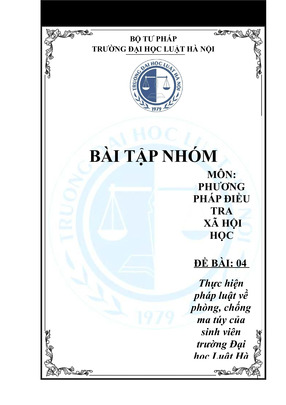UCP600 & UCP500 Compared
Part I. The Modifications and Changes in General
a. Given 14 definitions at first and 12 interpretations to clarify the
meaning of ambiguous terms, refer to Art 2 & 3.
b. Agreed that the issuing bank must reimburse the nominated
bank even though the documents are lost in the transmitting
however, the presentation must be complying.
c. ……
Part II. Detailed Comparison for Each Article
Article 1 Application of UCP ................................................................................. 2
Article 2 Definitions................................................................................................ 2
Article 3 Interpretations.......................................................................................... 3
Article 4 Credits v. Contracts ................................................................................. 4
Article 5 Documents v. Goods, Services or Performance .................................... 4
Article 6 Availability, Expiry Date and Place for Presentation ............................ 4
Article 7 Issuing Bank Undertaking....................................................................... 5
Article 8 Confirming Bank Undertaking ............................................................... 6
Article 9 Advising of Credits and Amendments.................................................... 7
Article 10 Amendments .......................................................................................... 8
Article 11 Teletransmitted and Pre-Advised Credits and Amendments .............. 8
Article 12 Nomination ............................................................................................ 9
Article 13 Bank-to-Bank Reimbursement Arrangements..................................... 9
Article 14 Standard for Examination of Documents...........................................10
Article 15 Complying Presentation......................................................................12
Article 16 Discrepant Documents, Waiver and Notice .......................................12
Article 17 Original Documents and Copies.........................................................13
Article 18 Commercial Invoice ............................................................................14
Article 19 Transport Document Covering at Least Two Different Modes of
Transport ..............................................................................................15
Article 20 Bill of Lading.......................................................................................17
Article 21 Non-Negotiable Sea Waybill ..............................................................19
Article 22 Charter Party Bill of Lading ...............................................................20
Article 23 Air Transport Document .....................................................................21
Article 24 Road, Rail or Inland Waterway Transport Documents .....................23
Article 25 Courier Receipt, Post Receipt or Certificate of Posting ...................24
Article 26 "On Deck", "Shipper's Load and Count", “Said by Shipper to
Contain” and Charges Additional to Freight .....................................25
Article 27 Clean Transport Document .................................................................25
Article 28 Insurance Document and Coverage....................................................25
Article 29 Extension of Expiry Date or Last Day for Presentation ...................27
Article 30 Tolerance in Credit Amount, Quantity and Unit Prices ....................27
Article 31 Partial Drawings or Shipments...........................................................27
Article 32 Instalment Drawings or Shipments ....................................................28
Article 33 Hours of Presentation..........................................................................28
Article 34 Disclaimer on Effectiveness of Documents.......................................28
Article 35 Disclaimer on Transmission and Translation.....................................29
Article 36 Force Majeure......................................................................................29
Article 37 Disclaimer for Acts of an Instructed Party.........................................29
Article 38 Transferable Credits ............................................................................30
Article 39 Assignment of Proceeds......................................................................32
Part I. The Modifications and Changes in General
a.
b.
c.
d.
e.
f.
g.
h.
i.
j.
k.
l.
m.
n.
o.
p.
Given 14 definitions at first and 12 interpretations to clarify the
meaning of ambiguous terms, refer to Art 2 & 3. And we need
pay attention to the change about ‘negotiation’.
Agreed that the issuing bank must reimburse the nominated
bank even though the documents are lost in the transmitting
however, the presentation must be complying.
Denied the practice that banks stipulate the clause about which
the amendment should be accepted by beneficiary who did not
send any rejected advice in certain time, refer to sub-article 10
f.
Five banking days replaced reasonable time and seven banking
days, refer to sub-article 14 b.
Two kinds of form about refusing have been added in UCP600,
refer to sub-article 16 c iii.
Banks can now accept an insurance document that contains
reference to any exclusion clause, refer to sub-article 28 i.
The insurance document could be issued by proxies, refer
sub-article 28 a.
The clause for transport documents issued by Freight
Forwarders has been deleted.
The clause about carrying vessel propelled by sail only has
been deleted since that kind of sailboat has dropped out of
ocean transport.
The expression is straightaway, precise and compact, for
example, the wording for ‘unless the credit expressly
stipulates…’ is not used in UCP600.
The clause about shipment date has changed, refer to
sub-article 19 a ii, 20 a ii, 21 a ii and 22 a ii, especially to note
the effect to received bill of lading.
Canceled the blocking frame about the form of clauses.
The number of the clauses has decreased to 39 from original
49.
The deferred payment credit could be discounted or purchased.
Added the acts of terrorism as a kind of Force Majeure, refer to
Art 36.
Confirmed that the issuing bank may be a transferring bank,
refer to sub-article 38 b.
1
Part II. Detailed Comparison for Each Article
Article 1 Application of UCP
The Uniform Customs and Practice for Documentary
Credits, 2007 Revision, ICC Publication no. 600 (“UCP”)
are rules that apply to any documentary credit (“credit”)
(including, to the extent to which they may be applicable,
any standby letter of credit) when the text of the credit
expressly indicates that it is subject to these rules.
They are binding on all parties thereto unless expressly
modified or excluded by the credit.
It is similar to the Art 1 of 500, however
there are three differences:
‘any’ replace ‘all’
‘when … rules’ replace ‘where … credit’
‘unless
…
credit’
otherwise … credit’
replace
‘unless
Article 2 Definitions
For the purpose of these rules:
Advising bank means the bank that advises the credit
at the request of the issuing bank.
Applicant means the party on whose request the credit
is issued.
Banking day means a day on which a bank is regularly
open at the place at which an act subject to these rules is
to be performed.
Beneficiary means the party in whose favour a credit is
issued.
Complying presentation means a presentation that is
in accordance with the terms and conditions of the credit,
the applicable provisions of these rules and international
standard banking practice.
Confirmation means a definite undertaking of the
confirming bank, in addition to that of the issuing bank, to
honour or negotiate a complying presentation.
Confirming bank means the bank that adds its
confirmation to a credit upon the issuing bank’s
authorization or request.
Credit means any arrangement, however named or
described, that is irrevocable and thereby constitutes a
definite undertaking of the issuing bank to honour a
complying presentation.
Honour means:
a. to pay at sight if the credit is available by sight
payment.
b. to incur a deferred payment undertaking and pay
at maturity if the credit is available by deferred
payment.
c. to accept a bill of exchange (“draft”) drawn by the
beneficiary and pay at maturity if the credit is
available by acceptance.
Issuing bank means the bank that issues a credit at the
request of an applicant or on its own behalf.
Negotiation means the purchase by the nominated
bank of drafts (drawn on a bank other than the
nominated bank) and/or documents under a
2
This article is new added, it clarifies many
definitions which didn’t defined in 500,
however, some items ever published in some
publications of ICC including 500, such as
Banking day, credit, etc.
Of cause, some items are first presented in
600 or have been amended so that we should
focus:
‘Complying presentation’ is a new term,
under 500, we usually used ‘ the documents
to be presented in compliance’, and the new
one is more concision.
In 500, the Art 2 gave the mean of credit and
four types L/C, and in Art 6 the irrevocable
and revocable L/C were listed at the same
time, however, in 600, the revocable L/C has
been deleted. So, we should note that all L/C
are irrevocable under UCP600.
Another difference is that the original four
types are changed into three categories,
which are called by a joint name - Honour,
which includes available by sight payment,
deferred payment and acceptance, and the
Negotiation was deleted from the basic types.
It was changed to a burchase behalf other
than payment type.
In 500, negotiation means the giving of value
for draft(s) and/or document(s), which
borrowed the jural definition. But there were
many issues and problems in the banking
practice, therefore it is amended in 600. And
complying presentation, by advancing or agreeing to
advance funds to the beneficiary on or before the
banking day on which reimbursement is due to the
nominated bank.
Nominated bank means the bank with which the credit
is available or any bank in the case of a credit available
with any bank.
Presentation means either the delivery of documents
under a credit to the issuing bank or nominated bank or
the documents so delivered.
Presenter means a beneficiary, bank or other party that
makes a presentation.
in 500 Art14 F that is about payment,
acceptance, and negotiation under reserve or
against an indemnity has been deleted. And it
is defined as ‘purchase…drafts…under a
complying presentation’. What is the
relationship
between
‘honour’
and
‘negotiation’?
Please think who are the other parties.
Article 3 Interpretations
For the purpose of these rules:
Where applicable, words in the singular include the
plural and in the plural include the singular.
A credit is irrevocable even if there is no indication to that
effect.
A document may be signed by handwriting, facsimile
signature, perforated signature, stamp, symbol or any
other mechanical or electronic method of authentication.
A requirement for a document to be legalized, visaed,
certified or similar will be satisfied by any signature,
mark, stamp or label on the document which appears to
satisfy that requirement.
It means the singular and plural in UCP600
has the same meaning, which might refer our
Chinese language, I think.
It is similar to the Art 6 C of 500, in fact,
under UCP600, only irrevocable credit was
stipulated.
It is similar to the Art 20 B of 500
It is similar to the Art 20 D of 500, however
the words ‘to be authenticated, validated’ are
deleted from this clause.
Branches of a bank in different countries are considered
to be separate bank.
It is similar to the last sentence of 500 Art 2
and ‘separate’ replaces ‘another’
Terms such as "first class", "well known", "qualified",
"independent", "official", "competent" or "local" used to
describe the issuer of a document allow any issuer
except the beneficiary to issue that document.
It is similar to the Art 20 A of 500 and more
concision.
Unless required to be used in a document, words
such as "prompt", "immediately" or "as soon as possible"
will be disregarded.
It is similar to the Art 46 B of 500, but it is
more rigorous and extensive since Art46 B
was applicable to Dates for Shipment.
The expression "on or about" or similar will be
interpreted as a stipulation that an event is to occur
during a period of five calendar days before until five
calendar days after the specified date, both start and end
dates included.
It is similar to the Art 46 C of 500
3
The words "to", "until", "till", “from” and “between” when
used to determine a period of shipment include the date
or dates mentioned, and the words “before” and "after"
exclude the date mentioned.
The words “from” and "after" when used to determine
a maturity date exclude the date mentioned.
The terms "first half" and "second half" of a month shall
be construed respectively as the 1st to the 15th and the
16th to the last day of the month, all dates inclusive.
The terms "beginning", "middle" and "end" of a month
shall be construed respectively as the 1st to the 10th, the
11th to the 20th and the 21st to the last day of the month,
all dates inclusive.
It is similar to the Art 47 A &
added ‘between’ & ‘before’
It comes from ISBP P45(d),
difference when ‘from’ was
determine maturity date and
shipment
B of 500,
note the
used to
period of
It is the same with the Art 47 C of 500
It is the same with the Art 47 D of 500
Article 4 Credits v. Contracts
a. A credit by its nature is a separate transaction from the
sale or other contract on which it may be based. Banks
are in no way concerned with or bound by such contract,
even if any reference whatsoever to it is included in the
credit. Consequently, the undertaking of a bank to
honour, to negotiate or to fulfil any other obligation
under the credit is not subject to claims or defences by
the applicant resulting from its relationships with the
issuing bank or the beneficiary.
The section a. is the same with Art 3 of 500
except that it used the word ‘honour’.
A beneficiary can in no case avail itself of the contractual
relationships existing between banks or between the
applicant and the issuing bank.
b. An issuing bank should discourage any attempt by the
applicant to include, as an integral part of the credit,
copies of the underlying contract, proforma invoice
and the like.
It is similar to the Art 5 A ii of UCP500 but
the italic documents were new added in
UCP600.
Article 5 Documents v. Goods, Services or
Performance
Banks deal with documents and not with goods, services
or performance to which the documents may relate.
It is similar to the Art 4 of 500
Article 6 Availability, Expiry Date and Place for
Presentation
a. A credit must state the bank with which it is available
or whether it is available with any bank. A credit
available with a nominated bank is also available with the
issuing bank.
4
It is similar to the Art 10 B of 500. However
this clause gives a new item ‘Availability’
and admits freely available, but in Art 10 of
500 only negotiable L/C could be admitted as
freely available.
b. A credit must state whether it is available by sight
payment, deferred payment, acceptance or negotiation.
It is the same with the Art 10 A of UCP500
c. A credit must not be issued available by a draft drawn
on the applicant.
It differs from ISBP P56 since ‘must not’ i/o
‘should not’, it is compelling denial.
d. i. A credit must state an expiry date for presentation.
An expiry date stated for honour or negotiation will be
deemed to be an expiry date for presentation.
ii. The place of the bank with which the credit is
available is the place for presentation. The place
for presentation under a credit available with any
bank is that of any bank. A place for presentation
other than that of the issuing bank is in addition to
the place of the issuing bank.
e. Except as provided in sub-article 29 (a), a
presentation by or on behalf of the beneficiary must be
made on or before the expiry date.
Article 7 Issuing Bank Undertaking
a. Provided that the stipulated documents are presented
to the nominated bank or to the issuing bank and that
they constitute a complying presentation, the issuing
bank must honour, if the credit is available by:
i. sight payment, deferred payment or acceptance with
the issuing bank;
ii. sight payment with a nominated bank and that
nominated bank does not pay;
iii. deferred payment with a nominated bank and that
nominated bank does not incur its deferred payment
undertaking or, having incurred its deferred payment
undertaking, does not pay at maturity;
It is a clause about expiry date and place for
presentation and similar to the Art 42 of
UCP500. However I don’t find the clause for
‘21 days’ like Art 43 A of UCP500 in
UCP600.
It is new added clause in UCP600.
It is similar to the Art 42 B of UCP500.
In UCP500, the liability of Issuing and
Confirming Banks were prescribed in Art 9.
In UCP600, they are divided into two clauses
Art 7 and Art 8.
In the new wording, it is more precise. This
sentence of ‘a.i.’ declares the basic liability of
Issuing Bank. Those sentences from ‘a.ii.’ to
‘a.v.’ declare that when the nominated bank
dishonoured the Issuing Bank must perform
its basic liability still.
The item i is ‘Straight L/C’.
iv. acceptance with a nominated bank and that
nominated bank does not accept a draft drawn on it or,
having accepted a draft drawn on it, does not pay at
maturity;
v. negotiation with a nominated bank and that
nominated bank does not negotiate.
b. An issuing bank is irrevocably bound to honour as
of the time it issues the credit.
5
In UCP500, an irrevocable credit constituted
a ‘definite undertaking of the Issuing Bank’,
however, in this clause ‘b’, Issuing Bank is
‘irrevocably bound to honour’, which is the
same meaning as above.
c. An issuing bank undertakes to reimburse a nominated
bank that has honoured or negotiated a complying
presentation and forwarded the documents to the issuing
bank. Reimbursement for the amount of a complying
presentation under a credit available by acceptance or
deferred payment is due at maturity, whether or not the
nominated bank prepaid or purchased before maturity.
An issuing bank's undertaking to reimburse a
nominated bank is independent of the issuing bank’s
undertaking to the beneficiary.
This clause provides two undertakings of
Issuing Bank, one is to reimburse a
nominated bank, and the other is to pay to the
beneficiary. In UCP500, although there were
no details like UCP600, but the fact exited in
the practice. Of course, the clear documents
or complying presentation is necessary both
in the past and future.
In fact, this article reconfirms the first
responsibility to pay beneficiary even a
nominated bank (if any) by Issuing Bank.
Article 8 Confirming Bank Undertaking
a. Provided that the stipulated documents are presented
to the confirming bank or to any other nominated bank
and that they constitute a complying presentation, the
confirming bank must:
i. honour, if the credit is available by
This clause is almost same as last article,
however, there are some difference since the
Confirming Bank is other than Issuing Bank.
Therefore the sub-clause ‘a.ii’ is about
negotiate without recourse when the
Confirming Bank is nominated negotiating
bank by L/C and ‘b’ increases the word
‘negotiate’ compare with Issuing Bank.
a. sight payment, deferred payment or
acceptance with the confirming bank;
b. sight payment with another nominated bank
and that nominated bank does not pay;
c. deferred payment with another nominated
bank and that nominated bank does not incur its
deferred payment undertaking or, having incurred
its deferred payment undertaking, does not pay at
maturity;
d. acceptance with another nominated bank and
that nominated bank does not accept a draft drawn
on it or, having accepted a draft drawn on it, does
not pay at maturity;
e. negotiation with a nominated bank and that
nominated bank does not negotiate.
Any way, a Confirming Bank acts the role of
second Issuing Bank, therefore it should
undertake the same responsibility as the
Issuing Bank.
ii. negotiate, without recourse, if the credit is
available by negotiation with the confirming bank.
b. A confirming bank is irrevocably bound to honour or
negotiate as of the time it adds its confirmation to the
credit.
c. A confirming bank undertakes to reimburse another
nominated bank that has honoured or negotiated a
complying presentation and forwarded the documents to
the confirming bank. Reimbursement for the amount of a
6
It is similar to the relative section of Art 7.
complying presentation under a credit available by
acceptance or deferred payment is due at maturity,
whether or not another nominated bank prepaid or
purchased before maturity. A confirming bank's
undertaking to reimburse another nominated bank is
independent of the confirming bank’s undertaking to
the beneficiary.
d. If a bank is authorized or requested by the issuing
bank to confirm a credit but is not prepared to do so, it
must inform the issuing bank without delay and may
advise the credit without confirmation.
It is similar to Art 9 C of UCP500.
In fact the liability of Issuing and Confirming
Bank is not changed essentially.
Article 9 Advising of Credits and Amendments
This article adds some new
comparing with Art 7 of UCP500.
element
a. A credit and any amendment may be advised to a
beneficiary through an advising bank. An advising bank
that is not a confirming bank advises the credit and any
amendment without any undertaking to honour or
negotiate.
It clarifies the independence of Advising
Bank which does not undertake to honour or
negotiate except that it is Confirming Bank at
the same time.
b. By advising the credit or amendment, the advising
bank signifies that it has satisfied itself as to the apparent
authenticity of the credit or amendment and that the
advice accurately reflects the terms and conditions of the
credit or amendment received.
It is similar to Art 7 A of UCP500.
c. An advising bank may utilize the services of another
bank (“second advising bank”) to advise the credit and
any amendment to the beneficiary. By advising the credit
or amendment, the second advising bank signifies that it
has satisfied itself as to the apparent authenticity of the
advice it has received and that the advice accurately
reflects the terms and conditions of the credit or
amendment received.
In banking practice, lots of L/C are advised
though second advising bank, but the
UCP500 has no relative clause. In UCP600,
this is confirmed and the second advising
bank has the same right with first one.
d. A bank utilizing the services of an advising bank or
second advising bank to advise a credit must use the
same bank to advise any amendment thereto.
e. If a bank is requested to advise a credit or amendment
but elects not to do so, it must so inform, without delay,
the bank from which the credit, amendment or advice
has been received.
f. If a bank is requested to advise a credit or amendment
but cannot satisfy itself as to the apparent authenticity of
the credit, the amendment or the advice, it must so
inform, without delay, the bank from which the
instructions appear to have been received. If the
advising bank or second advising bank elects
7
It appeared in Art 11 B of UCP500, and now
it has been clarified in special clause of
UCP600. Please refer to R401
It is similar to Art 7 A of UCP500.
It is similar to Art 7 B of UCP500.
nonetheless to advise the credit or amendment, it must
inform the beneficiary or second advising bank that it has
not been able to satisfy itself as to the apparent
authenticity of the credit, the amendment or the advice..
Article 10 Amendments
a. Except as otherwise provided by article 38, a credit
can neither be amended nor cancelled without the
agreement of the issuing bank, the confirming bank,
if any, and the beneficiary.
b. An issuing bank is irrevocably bound by an
amendment as of the time it issues the amendment. A
confirming bank may extend its confirmation to an
amendment and will be irrevocably bound as of the time
it advises the amendment. A confirming bank may,
however, choose to advise an amendment without
extending its confirmation and, if so, it must inform the
issuing bank without delay and inform the beneficiary in
its advice.
c. The terms and conditions of the original credit (or a
credit incorporating previously accepted amendments)
will remain in force for the beneficiary until the
beneficiary communicates its acceptance of the
amendment to the bank that advised such amendment.
The beneficiary should give notification of acceptance or
rejection of an amendment. If the beneficiary fails to give
such notification, a presentation that complies with the
credit and to any not yet accepted amendment will be
deemed to be notification of acceptance by the
beneficiary of such amendment. As of that moment the
credit will be amended.
The Art 9 D of UCP500 stipulated about
amendments, in UCP600, ICC draws a
separate clause about it. Then, we could
presume that a mass of problems and issues
about amendments happened in banking
practice. Please note it does not state
applicant at all.
Section a is similar to Art 9 D i of UCP500.
It is almost same as Art 9 D ii of UCP500.
The
Confirming
Bank
has
the
independence whether it extends its
confirmation to an amendment. There is no
change comparing with UCP500.
It is the same with Art 9 D iii of UCP500.
However, there is a case in dilemma. L/C
required that the goods be shipped under
four periods, each 100mt in Jan, Feb, Mar
and Apr. Now Issuing Bank gave an
amendment, which the shipment periods
were changed to May, Jun, Jul, and Aug.
Beneficiary did not send any notification
and shipped the first 100mt in Jan,
however, it shipped the second 100mt in
Jun. Could we consider the beneficiary
accept the amendment? If it is positive, is
the acceptation valid?
d. A bank that advises an amendment should inform the
bank from which it received the amendment of any
notification of acceptance or rejection.
It is new content, however, in UCP600
draft of Jun 2006, the ‘should’ was i/o by
‘must’. The different tone decreases the
liability of the bank that advises the
amendment.
e. Partial acceptance of an amendment is not allowed
and will be deemed to be notification of rejection of
the amendment.
It is similar to Art 7 D iv of UCP500.
f. A provision in an amendment to the effect that the
amendment shall enter into force unless rejected by the
beneficiary within a certain time shall be disregarded.
It comes from ICC R315. ICC considered
that those practices changed the irrevocable
nature of the L/C irrevocable undertaking.
And it disobeys some states’ laws.
Article 11 Teletransmitted and Pre-Advised Credits
and Amendments
a. An authenticated teletransmission of a credit or
8
It is similar to Art 11 A i of UCP500, but
the expression is stronger than it.
amendment will be deemed to be the operative credit or
amendment, and any subsequent mail confirmation shall
be disregarded.
If a teletransmission states "full details to follow" (or
words of similar effect), or states that the mail
confirmation is to be the operative credit or amendment,
then the teletransmission will not be deemed to be the
operative credit or amendment. The issuing bank must
then issue the operative credit or amendment without
delay in terms not inconsistent with the teletransmission.
b. A preliminary advice of the issuance of a credit or
amendment (“pre-advice”) shall only be sent if the
issuing bank is prepared to issue the operative credit or
amendment. An issuing bank that sends a pre-advice is
irrevocably committed to issue the operative credit or
amendment, without delay, in terms not inconsistent with
the pre-advice.
It is almost same as Art 11 A ii of UCP500.
Section b is almost same as Art 11 C ii of
UCP500, however, it deleted the original
words ‘unless otherwise stated…’ which
admitted Issuing Bank to state when, how or
on what conditions, if those were not to occur
without undue delay, but this state did not
include a term such as ‘operative’. Refer
R318 pls.
This article renews the Art 11 of UCP500,
and then the consecution of 600 is more
express and has stronger tone.
Article 12 Nomination
This article has replaced Art 18 of UCP500.
a. Unless a nominated bank is the confirming bank, an
authorization to honour or negotiate does not impose
any obligation on that nominated bank to honour or
negotiate, except when expressly agreed to by that
nominated bank and so communicated to the
beneficiary.
b. By nominating a bank to accept a draft or incur a
deferred payment undertaking, an issuing bank
authorizes that nominated bank to prepay or
purchase a draft accepted or a deferred payment
undertaking incurred by that nominated bank.
It is a little similar to Art 18 B of UCP500,
however, the instances are exiting largely in
banking practices. Therefore, UCP600 gives
the more detail clause to confirm the
independent rights of nominated bank.
It stipulates what is the meaning that issuing
bank selects the nominated bank. It is a new
clause too.
c. Receipt or examination and forwarding of documents
by a nominated bank that is not a confirming bank
does not make that nominated bank liable to honour or
negotiate, nor does it constitute honour or negotiation.
It reaffirms that the nominated bank could
ignore the issuing bank’s nomination if it is
not confirmation bank.
Article 13 Bank-to-Bank Reimbursement
Arrangements
It is similar Art 19 of UCP500.
a. If a credit states that reimbursement is to be obtained
In UCP500, Issuing Bank must give an
9
But the items about charges and applicant’s
liable which stipulated in Art 18 C & D are
deleted by UCP600, I have no idea about it!
by a nominated bank ("claiming bank") claiming on
another party ("reimbursing bank"), the credit must
state if the reimbursement is subject to the ICC rules
for bank-to-bank reimbursements in effect on the
date of issuance of the credit.
authorization, but under the frame of
UCP600, it is replaced by the italic sentence.
Even though this section uses the word
‘must’, there are different in next item. So I
don’t know the effect of ‘must’ in item a.
b. If a credit does not state that reimbursement is
subject to the ICC rules for bank- to-bank
reimbursements, the following apply:
Opposite to item a, item b states the
condition when L/C does not state the
reimbursement is subject to ICC rules.
i. An issuing bank must provide a reimbursing
bank with a reimbursement authorization that
conforms with the availability stated in the credit. The
reimbursement authorization should not be subject
to an expiry date.
‘Must provide…authorization’ is the same as
UCP500.
ii. A claiming bank shall not be required to supply a
reimbursing bank with a certificate of compliance with
the terms and conditions of the credit.
It is almost same as Art 19 B of UCP500.
iii. An issuing bank will be responsible for any loss of
interest, together with any expenses incurred, if
reimbursement is not provided on first demand by a
reimbursing bank in accordance with the terms and
conditions of the credit.
It renews D of UCP500, and adds the words
who will be responsible for any interest,
expense etc.
iv. A reimbursing bank's charges are for the account
of the issuing bank. However, if the charges are for
the account of the beneficiary, it is the responsibility
of an issuing bank to so indicate in the credit and in
the reimbursement authorization. If a reimbursing
bank's charges are for the account of the beneficiary,
they shall be deducted from the amount due to a
claiming bank when reimbursement is made. If no
reimbursement is made, the reimbursing bank's
charges remain the obligation of the issuing bank.
It is similar to Art 19 E of UCP500.
c. An issuing bank is not relieved of any of its obligations
to provide reimbursement if reimbursement is not made
by a reimbursing bank on first demand.
It is similar to Art 19 C of UCP500.
Article 14 Standard for Examination of Documents
It includes more details than Art 13 of
UCP500.
a. A nominated bank acting on its nomination, a
confirming bank, if any, and the issuing bank must
examine a presentation to determine, on the basis of the
documents alone, whether or not the documents appear
on their face to constitute a complying presentation.
It states that the nominated bank, confirming
bank and issuing bank must examine
documents independently. No essential
changes happened.
b. A nominated bank acting on its nomination, a
confirming bank, if any, and the issuing bank shall each
There are two changes than before, one is
that the checking time is decrease to 5
10
have a maximum of five banking days following the day
of presentation to determine if a presentation is
complying. This period is not curtailed or otherwise
affected by the occurrence on or after the date of
presentation of any expiry date or last day for
presentation.
c. A presentation including one or more original
transport documents subject to articles 19, 20, 21, 22, 23,
24 or 25 must be made by or on behalf of the beneficiary
not later than 21 calendar days after the date of
shipment as described in these rules, but in any
event not later than the expiry date of the credit.
d. Data in a document, when read in context with the
credit, the document itself and international standard
banking practice, need not be identical to, but must
not conflict with, data in that document, any other
stipulated document or the credit.
e. In documents other than the commercial invoice, the
description of the goods, services or performance, if
stated, may be in general terms not conflicting with their
description in the credit.
f. If a credit requires presentation of a document other
than a transport document, insurance document or
commercial invoice, without stipulating by whom the
document is to be issued or its data content, banks will
accept the document as presented if its content appears
to fulfil the function of the required document and
otherwise complies with sub-article 14 (d).
banking days i/o 7 before, and the other is
that italic parts are increased.
It differs from Art 43 of UCP500 at all, it
strictly restricts the documents to be
presented within 21 calendar days and the
L/C need not stipulate the period for
presentation. Of course, the presentation
must be finished not later than the expiry date
of L/C.
It restates that what are ‘compliance’ and
‘consistency’. Please refer to R251.
It is similar to Art 37 C of UCP500. And
please note that it is a misunderstanding that
documents other than invoice should state the
description of the goods. Refer to R364. But
any way, the documents without description
goods must be founded sufficient relationship
with other documents, which L/C required.
It is similar to Art 21 of UCP500. Please note
the italic wording about ‘fulfill the function’,
it maybe bring some bother in future.
g. A document presented but not required by the
credit will be disregarded and may be returned to the
presenter.
It is a new clause in UCP600. As to
‘presenter’, please refer to Art 2.
h. If a credit contains a condition without stipulating the
document to indicate compliance with the condition,
banks will deem such condition as not stated and will
disregard it.
It is similar to Art 13 C of UCP500.
i. A document may be dated prior to the issuance date of
the credit, but must not be dated later than its date of
presentation.
It is similar to Art 22 of UCP500. And the
sentence ‘but … presentation’ is added, in
another word, it expresses clearly that the
documents must be presented within the
presentation period of L/C.
j. When the addresses of the beneficiary and the
11
applicant appear in any stipulated document, they need
not be the same as those stated in the credit or in
any other stipulated document, but must be within
the same country as the respective addresses
mentioned in the credit. Contact details (telefax,
telephone, email and the like) stated as part of the
beneficiary’s and the applicant’s address will be
disregarded. However, when the address and contact
details of the applicant appear as part of the consignee
or notify party details on a transport document
subject to articles 19, 20, 21, 22, 23, 24 or 25, they must
be as stated in the credit.
k. The shipper or consignor of the goods indicated on
any document need not be the beneficiary of the credit.
l. A transport document may be issued by any party
other than a carrier, owner, master or charterer
provided that the transport document meets the
requirements of articles 19, 20, 21, 22, 23 or 24 of these
rules
Article 15 Complying Presentation
a. When an issuing bank determines that a
presentation is complying, it must honour.
b. When a confirming bank determines that a
presentation is complying, it must honour or
negotiate and forward the documents to the issuing
bank.
This item stipulates the issues about address
and telephone or fax number, which should
be disregarded under the frame of UCP600. It
comes from ISBP but go ahead again.
But please note this sentence ‘however…in
the credit’. When these information are parts
of consignee or notify party, they must
comply with L/C.
It is similar to Art 31 C of UCP500 but the
scope has been extended to any document
except bill of lading.
It is a new clause but these actions exist in
practice largely.
It is a new article since the concept of
‘Complying Presentation’ is presented at first
under the frame of UCP600.
It is liability of Issuing Bank, which is the
same as UCP500.
It is liability of Confirming Bank, which is
the same as UCP500.
c. When a nominated bank determines that a
presentation is complying and honours or
negotiates, it must forward the documents to the
confirming bank or issuing bank.
It is the same as the practice under the frame
of UCP500, merely it has become official
clause of UCP600.
Article 16 Discrepant Documents, Waiver and Notice
It is similar to Art 14 of UCP500
a. When a nominated bank acting on its nomination, a
confirming bank, if any, or the issuing bank determines
that a presentation does not comply, it may refuse to
honour or negotiate.
It is similar to Art 14 B of UCP500. But,
refer to the description of Art 2 of UCP600
hereto, when a presentation is not complying
presentation, bank should not purchase the
documents; if the bank buys the documents,
it could not get the jural rights for negotiating
bank.
b. When an issuing bank determines that a presentation
does not comply, it may in its sole judgement approach
the applicant for a waiver of the discrepancies. This does
not, however, extend the period mentioned in sub-article
14 (b).
12
It is the same as Art 14 C of UCP500.
c. When a nominated bank acting on its nomination, a
confirming bank, if any, or the issuing bank decides to
refuse to honour or negotiate, it must give a single
notice to that effect to the presenter.
The notice must state:
i. that the bank is refusing to honour or negotiate;
and
ii. each discrepancy in respect of which the bank
refuses to honour or negotiate; and
iii.a) that the bank is holding the documents pending
further instructions from the presenter; or
b) that the issuing bank is holding the
documents until it receives a waiver from the
applicant and agrees to accept it, or receives
further instructions from the presenter prior to
agreeing to accept a waiver; or
c) that the bank is returning the documents; or
d) that the bank is acting in accordance with
instructions previously received from the
presenter.
d. The notice required in sub-article 16 (c) must be given
by telecommunication or, if that is not possible, by other
expeditious means no later than the close of the fifth
banking day following the day of presentation.
e. A nominated bank acting on its nomination, a
confirming bank, if any, or the issuing bank may, after
providing notice required by sub-article 16 (c) (iii) (a) or
(b), return the documents to the presenter at any
time.
f. If an issuing bank or a confirming bank fails to act in
accordance with the provisions of this article, it shall be
precluded from claiming that the documents do not
constitute a complying presentation.
g. When an issuing bank refuses to honour or a
confirming bank refuses to honour or negotiate and has
given notice to that effect in accordance with this article,
it shall then be entitled to claim a refund, with interest, of
any reimbursement made.
Article 17 Original Documents and Copies
a. At least one original of each document stipulated in
the credit must be presented.
13
It is similar to the first half of Art 14 D of
UCP500. And ‘the presenter’ has replaced
original sentence. Please note ‘single’.
Following is about the content which the
refuse notice should state. And there are
some difference comparing with UCP500:
i.‘Refusing to honour or negotiate’ replaced
‘refuses the documents.
ii.’Each
discrepancy’
replaced
‘all
discrepancy’, the expression is more intense.
iii.To compare with Art 14 D ii of UCP500,
this item adds two new operating methods.
One is item b, which exists in banking
practice at present; however, it was neither
stipulated by UCP500 nor advocated by ICC
in fact. And now, it is permitted by ICC
though the UCP600. The other is item d,
which seems that the presenter has sent to the
bank an instruction about how to process the
documents with discrepancy in advance,
therefore, the bank could process the
documents as this previous instruction.
It is similar to Art 14 D i of UCP500, merely
the ‘fifth banking day’ has replaced the
‘seventh banking day’.
It is a new item to compare with UCP500 and
banks are endued with more uninfluenced
right to decide when they should return the
documents since this article doesn’t require
banks to state the time of documents return.
It is similar to Art 14 E of UCP500.
It is similar to Art 14 D iii of UCP500.
The Art 14 F of UCP500 about reserve has
been deleted by UCP600.
It is a new article including part of Art 20 B
& C of UCP500,
It comes from ISBP32.
b. A bank shall treat as an original any document
bearing an apparently original signature, mark,
stamp, or label of the issuer of the document, unless
the document itself indicates that it is not an original.
c. Unless a document indicates otherwise, a bank will
also accept a document as original if it:
i. appears to be written, typed, perforated or stamped
by the document issuer’s hand; or
ii.appears to be on the document issuer’s original
stationery; or
iii.states that it is original, unless the statement
appears not to apply to the document presented.
It is similar Art 20 B of UCP500. However, if
a document appears to be original but is in
fact not original, according to Art 34 of this
rule, banks will not undertake any
responsibility. For example, if beneficiary
present a photocopy of B/L marked ‘original’
and signed by carrier, should the bank accept
it as original B/L?
It fully comes from the item 1 General
approach Art 3 of The determination of an
"Original" document in the context of UCP
500 sub-Article 20(b). And item iii. responds
the clause b above. And this determination is
recommended for further guidance under
UCP600, please refer to ISBP(600)
paragraph 33.
d. If a credit requires presentation of copies of
documents, presentation of either originals or copies is
permitted.
It comes from ISBP 33.
e. If a credit requires presentation of multiple documents
by using terms such as "in duplicate", "in two fold" or "in
two copies", this will be satisfied by the presentation of at
least one original and the remaining number in
copies, except when the document itself indicates
otherwise.
It is the same as Art 20 C ii of UCP500 and
ISBP33. But, what about L/C requires Signed
Invoice in 3 copies?
Article 18 Commercial Invoice
It is similar to Art 37 of UCP500.
What is not an "Original"? A document
indicates that it is not an original if it
a) appears to be produced on a telefax
machine;
b) appears to be a photocopy of another
document which has not otherwise been
completed by hand marking the
photocopy or by photocopying it on what
appears to be original stationery; or
c) states in the document that it is a true
copy of another document or that another
document is the sole original.
— Quoted from mentioned determination
above.
a. A commercial invoice:
i. must appear to have been issued by the
beneficiary (except as provided in article 38);
ii. must be made out in the name of the applicant
(except as provided in sub-article 38 (g));
iii. must be made out in the same currency as the
credit; and
14
It is similar to Art 37 A i of UCP500 except
that the words ‘on their face’ was deleted.
It is the same as Art 37 A ii of UCP500.
It is a new clause come from ISBP 64, which
included unit price (if any).
It is the same as Art 37 A iii of UCP500.
iv. need not be signed.
b. A nominated bank acting on its nomination, a
confirming bank, if any, or the issuing bank may accept a
commercial invoice issued for an amount in excess of
the amount permitted by the credit, and its decision will
be binding upon all parties, provided the bank in
question has not honoured or negotiated for an amount
in excess of that permitted by the credit.
It is similar to Art 37 B of UCP500.
c. The description of the goods, services or performance
in a commercial invoice must correspond with that
appearing in the credit.
It is similar to Art 37 C of UCP500, merely
the clause about other documents’ description
of goods was deleted. Please refer to Art 14 e
of this rule.
Article 19 Transport Document Covering at Least
Two Different Modes of Transport
It is similar to Art 26 of UCP500, merely the
title has changed very long.
a. A transport document covering at least two different
modes of transport (multimodal or combined transport
document), however named, must appear to:
i. indicate the name of the carrier and be signed
by:
• the carrier or a named agent for or on behalf of
the carrier, or
• the master or a named agent for or on behalf of
the master.
Any signature by the carrier, master or agent must be
identified as that of the carrier, master or agent.
Any signature by an agent must indicate whether the
agent has signed for or on behalf of the carrier, or for
or on behalf of the master.
ii. indicate that the goods have been dispatched,
taken in charge or shipped on board at the place
stated in the credit, by:
• pre-printed wording, or
• a stamp or notation indicating the date on which
the goods have been dispatched, taken in charge
or shipped on board.
The date of issuance of the transport document
will be deemed to be the date of dispatch, taking in
charge or shipped on board and the date of shipment.
However, if the transport document indicates, by
stamp or notation, a date of dispatch, taking in
15
Generally, this article is simpler than original
one. The importance change is that the words
‘multimodal transport operator’ were deleted.
From that, we could presume that ICC
considered the role of multimodal transport
operator as the carrier. Therefore, it is no
necessary to use the words ‘…operator’. And
the words ‘or otherwise authenticated by’
were deleted.
It is similar to Art 26 A of UCP500.
These two items don’t indicate the content
about the issue to identify the capacity of the
carrier since the requirement has been
stipulated in above item. Please see the italic
sentence ‘indicate…carrier’ in item a i of this
rule.
It is similar to Art 26 A ii of UCP500. But the
italic words replaced the ‘by stamp or
otherwise’. The pre-printed wording and
notation have covered for otherwise, I think.
And this mark must not be dated, if the date
was added, it should be deemed as the date of
shipment. This is the same requirement as
UCP500.
charge or shipped on board, this date will be deemed
to be the date of shipment.
iii. indicate the place of dispatch, taking in charge or
shipment and the place of final destination stated in
the credit, even if:
a. the transport document states, in addition, a
different place of dispatch, taking in charge or
shipment or place of final destination,
It is similar to Art 26 A iii of UCP500.
It is similar to Art 26 A iii a of UCP500.
or
b. the transport document contains the indication
"intended" or similar qualification in relation to the
vessel, port of loading or port of discharge.
It is similar to Art 26 A iii b of UCP500.
iv. be the sole original transport document or, if
issued in more than one original, be the full set as
indicated on the transport document.
It is similar to Art 26 A iv of UCP500.
v. contain terms and conditions of carriage or make
reference to another source containing the terms and
conditions of carriage (short form or blank back
transport document). Contents of terms and
conditions of carriage will not be examined.
It is similar to Art 26 A v of UCP500.
vi. contain no indication that it is subject to a
charter party.
It is similar to Art 26 A vi of UCP500 but the
words ‘the carrying vessel is propelled by
sail only’. Maybe the sail vessels have been
washed out in sailing practice.
b. For the purpose of this article, transhipment means
unloading from one means of conveyance and
reloading to another means of conveyance (whether
or not in different modes of transport) during the
carriage from the place of dispatch, taking in charge
or shipment to the place of final destination
stipulated in the credit.
It is a new item, however, in a multimodal
transshipment, transhipment will occur,
which comes from ISBP 131.
c.
It is similar to Art 26 B of UCP500, but it
was divided into two parts, which present the
same meaning. I have no idea about it.
i. A transport document may indicate that the goods
will or may be transhipped provided that the entire
carriage is covered by one and the same transport
document.
ii. A transport document indicating that transhipment
will or may take place is acceptable, even if the credit
prohibits transhipment.
16
Article 20 Bill of Lading
It is similar to Art 23 of UCP500.
a. A bill of lading, however named, must appear to:
Generally, this article is simpler than original
one. And the words ‘or otherwise
authenticated by’ were deleted.
i. indicate the name of the carrier and be signed by:
• the carrier or a named agent for or on behalf of
the carrier, or
• the master or a named agent for or on behalf of
the master.
These words are the same as last article and
similar to Art 23 A i of UCP500
Any signature by the carrier, master or agent must be
identified as that of the carrier, master or agent.
Any signature by an agent must indicate whether the
agent has signed for or on behalf of the carrier or for
or on behalf of the master.
ii. indicate that the goods have been shipped on
board a named vessel at the port of loading
stated in the credit by:
• pre-printed wording, or
• an on board notation indicating the date on which
the goods have been shipped on board.
The date of issuance of the bill of lading will be
deemed to be the date of shipment unless the bill
of lading contains an on board notation
indicating the date of shipment, in which case the
date stated in the on board notation will be
deemed to be the date of shipment.
If the bill of lading contains the indication "intended
vessel" or similar qualification in relation to the name
of the vessel, an on board notation indicating the
date of shipment and the name of the actual vessel is
required.
iii. indicate shipment from the port of loading to the
port of discharge stated in the credit.
17
Comparing with Art 23 A ii of UCP500, there
are three differences. The first is that the item
about port of loading was presented
advanced. The second is that the change
about the date of shipment, which overdraw
the original standard. Please refer to the italic
sentence below. The third is that ‘shipped…’
replaced the original in UCP500. so that
should it not accept that b/l marked ‘shipped
on board’ notation only?
Under UCP500, we should distinguish the
type of b/l. In case it is ship on board b/l, the
on board notation need not be marked since
the issuance date should be considered as the
date of shipment. Then, if the notation is
appeared with date, the date should be
considered as the date of shipment whatever
it is earlier or later than the issuance date.
In case the b/l is received b/l, the notation
without date should be accepted and the issue
date should be considered as date of
shipment.
However, in some special cases, the date of
shipment for on board notation is necessary,
let’s go ahead.
It is similar to Art 23 A ii of UCP500.
It includes the last paragraph of Art 23 A ii
and iii of UCP500. But please note the italic
word ‘from…to’, UCP500 used the words
‘indicates the port of loading…’. In practice,
it often happened that the ports were
indicated not in the relative columns, which
the b/l preprinted for these ports, they often
were appeared on the another place of the b/l,
such as on board notation. And now, we
should not concern the preprinted columns on
the b/l, what we should do is to look for
whether the b/l indicate ‘from…to’. Of
course, if the ports were appeared in those
columns, we must accept them.
If the bill of lading does not indicate the port of
loading stated in the credit as the port of loading, or if
it contains the indication “intended” or similar
qualification in relation to the port of loading, an on
board notation indicating the port of loading as
stated in the credit, the date of shipment and the
name of the vessel is required. This provision
applies even when loading on board or shipment on
a named vessel is indicated by pre-printed wording
on the bill of lading.
iv. be the sole original bill of lading or, if issued in
more than one original, be the full set as indicated on
the bill of lading.
v. contain terms and conditions of carriage or make
reference to another source containing the terms and
conditions of carriage (short form or blank back bill of
lading). Contents of terms and conditions of carriage
will not be examined.
vi. contain no indication that it is subject to a charter
party.
b. For the purpose of this article, transhipment means
unloading from one vessel and reloading to another
vessel during the carriage from the port of loading to the
port of discharge stated in the credit.
c. i. A bill of lading may indicate that the goods will or
may be transhipped provided that the entire carriage
is covered by one and the same bill of lading.
ii. A bill of lading indicating that transhipment will or
may take place is acceptable, even if the credit
prohibits transhipment, if the goods have been
shipped in a container, trailer or LASH barge as
evidenced by the bill of lading.
It is further explain for above clause, please
note that the on board notation should
include port of loading, name of the vessel
and date of shipment relating A ii.
The new clause deleted the words about the
place different from port of loading etc.
It is similar to Art 23 A iv of UCP500.
It is similar to Art 23 A v of UCP500.
It is similar to Art 23 A vi of UCP500 and
deleted the words about carrying vessel.
The Art 23 A vii of UCP500 was deleted.
It is similar to Art 23 B of UCP500.
It is similar to Art 23 C of UCP500. But, the
phrase ‘unless transshipment is prohibited…’
were deleted and ‘may’ was added, therefore,
the range which this clause engaged is
zoomed in.
It is similar to Art 23 D i of UCP500, and the
word ‘may’ was added. However, it does not
require that the one and the same b/l should
cover the entire ocean carriage.
d. Clauses in a bill of lading stating that the carrier
It is similar to Art 23 D ii of UCP500.
18
reserves the right to tranship will be disregarded.
Article 21 Non-Negotiable Sea Waybill
It is similar to Art 24 of UCP500.
a. A non-negotiable sea waybill, however named, must
appear to:
It is similar to Art 24 A i of UCP500 and the
words ‘or otherwise authenticated by’ were
deleted.
i. indicate the name of the carrier and be signed by:
• the carrier or a named agent for or on behalf of
the carrier, or
• the master or a named agent for or on behalf of the
master.
Any signature by the carrier, master or agent must be
identified as that of the carrier, master or agent.
Any signature by an agent must indicate whether the
agent has signed for or on behalf of the carrier or for
or on behalf of the master.
ii. indicate that the goods have been shipped on
board a named vessel at the port of loading stated
in the credit by:
• pre-printed wording, or
• an on board notation indicating the date on which
the goods have been shipped on board.
It is similar to Art 21 A ii of UCP500 and Art
20 of UCP600. Please note the italic words.
Under UCP600, the b/l, n-n swb are required
to indicate the goods have been shipped on
board a named vessel, which is stricter than
before, and the same question as last article.
The date of issuance of the non-negotiable sea
waybill will be deemed to be the date of shipment
unless the non-negotiable sea waybill contains an on
board notation indicating the date of shipment, in
which case the date stated in the on board notation
will be deemed to be the date of shipment.
If the non-negotiable sea waybill contains the
indication "intended vessel" or similar qualification in
relation to the name of the vessel, an on board
notation indicating the date of shipment and the
name of the actual vessel is required.
iii. indicate shipment from the port of loading to the
port of discharge stated in the credit.
If the non-negotiable sea waybill does not indicate
the port of loading stated in the credit as the port of
loading, or if it contains the indication “intended” or
similar qualification in relation to the port of loading,
an on board notation indicating the port of loading as
stated in the credit, the date of shipment and the
19
It is similar to Art 24 A iii of UCP500 and Art
20 a iii of UCP600.
- Xem thêm -

